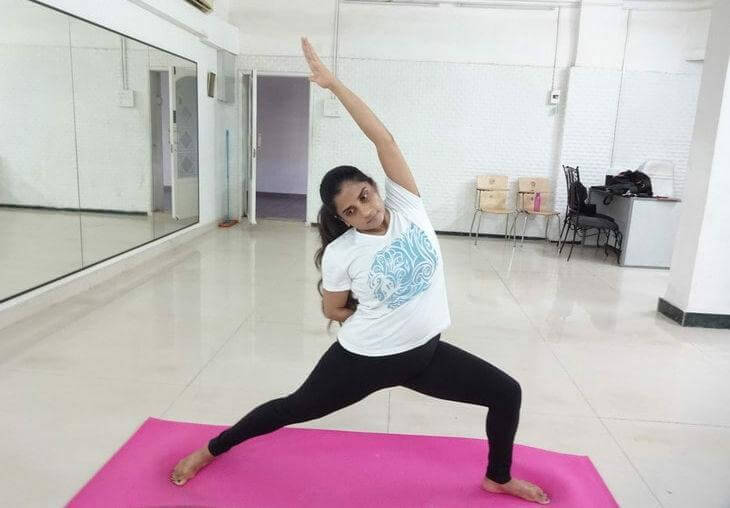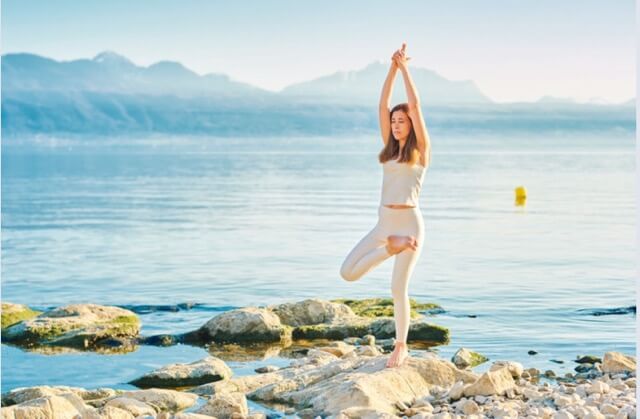Author: Randeep Singh / go to all articles on Yoga cure
Yoga for Legs:
Legs are the lower extremities, or lower limbs of the human body.
Bipedal animals like humans have advantage over the animals which walk on their fours: they can touch higher, upper limbs are free to grab or pick, can throw, and learn better. Yoga for legs work on the lower limbs.
Legs are the limbs for locomotion, one of the karmendriyas as per Samkhya studies, human legs, unlike other primates, have not evolved to grab but only to walk as is evident from the placing of the toes in a line, and absence of an opposable big toe which is present in tree climbing primates.
The edge of the foot where the toes are arranged side by side in a line helps gain a forward thrust as an reaction ,while walking, to the action of pushing the ground backwards. The core of the leg, the leg bones, is attached to the pelvis via a ball and socket joint, the hip joint. The entire length of the leg is divided into two by the presence of a hinge joint at the knee. Knee bending, flexion, plays an important role while walking.
Thigh bone, femur, is the longest bone in the body lying between the hip and the knee. Its length measures around one fourth of the overall height of the individual.
The thigh bone is covered by three hamstrings from behind which help bend the knee; the front of the thigh bone is covered by four major muscles, the quadriceps which are antagonistic to hamstrings at the knee joint. Five adductor muscles located in the inner side of the thigh help move the legs toward the midline of the body.
Tibia, and fibula re the two bones of the lower leg which are connect to the thigh bone via the knee joint. Gastrocnemius, and soleus are the major muscles running along the bones of the lower leg. Fibular nerves enervate the front of the lower leg, whereas the branches of the sciatica nerve handle the back of the lower leg.
Achilles tendon is an important tendon in the lower apart of the leg which connects the calve muscles to the ankle or the foot. Ankle lies between the lower leg and the foot, it facilitates flexion of the foot. Seven metatarsals, five metatarsals , and fourteen phalanges connected linearly form the bony framework of the foot.
Tone , and size of the muscle mass are critical to the health of the general metabolism in the body; the larger is the muscle mass, higher will be the rate of metabolism. Going by that logic the muscles of the leg are the largest for the entire body, toning, or developing these muscles will contribute more to the overall metabolism of the body than the muscles of the upper body.
Higher metabolic rate is more favorable to building other muscles of the body. Another benefit of working out the larger muscles of the legs is that more calories will be consumed for exercising these muscles than the smaller group of sinews. Toned legs of course add to the overall look of the individual. Moreover toned up legs improve balance of the body which help prevent the related injuries.

Yoga for toning legs, leg exercises
Yoga poses for the legs use standing asanas for strengthening the legs; in a standing posture when one bends in any direction the weight shift that is produced on the feet engages all the muscles of the leg to firm up and help keep the balance.
This strengthens the muscles and the joints of the hips, knees, and ankles. In all standing leg work outs the legs form the foundation of the pose being attempted; the muscles of the legs will be challenged by the smallest of the movement as they would have to work hard to maintain the alignment of the posture.
Keeping the mind on the breath along with doing the yoga for legs additionally strengthens the mind as well. The yoga poses for leg stretch have been found to stimulate the production of neural cells in the brain; neural cells are crucial to handling stress and for maintaining the flexibility of the mind.
All the lower body yoga stretches indirectly engage the muscles of the upper body as well, this provides exercise to the torso as well. Ashtanga yoga for legs help improve blood circulation in the entire body; owing to their length any movement in the legs twist and twirl the longer blood vessels , carrying large amounts of blood, providing a push to the blood streaming through them.
As large amount of blood is goaded to move faster within the legs it impacts its flow in the entire body. You must always tone your legs with yoga since it involves squatting, jumping, and stretching, all the possible ways the leg muscles can be worked out.
Asana and leg exercises for legs
Urdhvamukhasvan Asanas
Dhanurasana
Halasana
Other Informative Articles….

